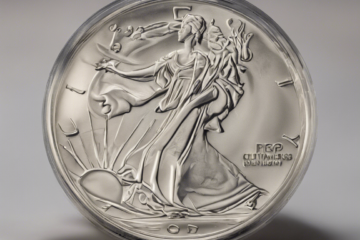Discover 2023 Navratri Colours & Significance!

Navratri, a nine-night Hindu festival celebrated with great fervor in India and by the Indian diaspora around the world, is a vibrant and colorful occasion. Each day of Navratri is associated with a specific color, and these colors hold deep significance in Hindu mythology and culture. In 2023, Navratri will be celebrated from September 25th to October 3rd, and knowing the colors for each day can add an extra layer of meaning and joy to your festive attire.
The Significance of Navratri Colors:
-
Yellow (Peacock Green) – Day 1: The first day of Navratri, also known as Pratipada, is dedicated to Shailputri, an incarnation of Goddess Durga. Yellow represents happiness and brightness, symbolizing the beginning of this auspicious festival.
-
Green (Royal Blue) – Day 2: On the second day of Navratri, devotees worship Brahmacharini, the goddess of peace and prosperity. Green signifies new beginnings, growth, and harmony.
-
Grey (Yellow) – Day 3: Chandraghanta, the third form of Goddess Durga, is worshipped on this day. Grey symbolizes strength and symbolizes the power within oneself to overcome obstacles.
-
Orange (White) – Day 4: Kushmanda, the fourth manifestation of the goddess, is honored on the fourth day of Navratri. Orange represents joy, creativity, and success.
-
Royal Blue (Red) – Day 5: Skandamata, the mother of Kartikeya, is worshipped on the fifth day. The color royal blue signifies loyalty, faith, and truth.
-
White (Green) – Day 6: Katyayani, the warrior goddess, is venerated on the sixth day. White represents purity, peace, and prayer.
-
Red (Grey) – Day 7: On the seventh day, Kaalratri, the fiercest form of Durga, is worshipped. Red symbolizes energy, passion, and action.
-
Sky Blue (Pink) – Day 8: Mahagauri, the epitome of beauty and grace, is worshipped on the eighth day. Sky blue represents tranquility, calmness, and spirituality.
-
Pink (Purple) – Day 9: The final day of Navratri is dedicated to Siddhidatri, the goddess of supernatural powers. Pink signifies love, gratitude, and compassion.
Why are Navratri Colors Important?
Understanding the significance of Navratri colors adds a deeper spiritual connection to the festival. Each color symbolizes traits, emotions, and virtues associated with the respective goddess being worshipped on that day. By wearing the designated color, devotees seek blessings related to those qualities, fostering a sense of devotion and spiritual growth during Navratri.
Tips for Incorporating Navratri Colors:
- Wear clothes in the specific color assigned for each day to honor the respective goddess.
- You can accessorize with jewelry, scarves, or other elements in the designated color if wearing a full outfit is not feasible.
- Consider applying nail polish, mehndi (henna), or incorporating the colors in your makeup to celebrate each day of Navratri.
- Decorate your home or puja altar with fabrics, flowers, or lights in the daily color to create a festive ambiance.
FAQs about Navratri Colors:
Q1: Can I wear the same color throughout Navratri?
A1: It is recommended to follow the designated color for each day to align with the significance of the respective goddess being worshipped.
Q2: What if I don’t have the specific color attire for a particular day?
A2: You can still participate in Navratri celebrations by incorporating the color through accessories, jewelry, or even a small element like a handkerchief or a ribbon.
Q3: Are there any taboos associated with wearing certain colors during Navratri?
A3: While there are no strict taboos, it is generally advisable to avoid wearing black during Navratri, as it symbolizes negativity and is considered inauspicious.
Q4: Can men also follow the tradition of wearing Navratri colors?
A4: Yes, men can also partake in the tradition by wearing the designated colors or incorporating them subtly through accessories or clothing elements.
Q5: How can I involve my children in celebrating Navratri colors?
A5: Encourage children to dress up in daily colors, engage in arts and crafts activities related to Navratri, or decorate their space with the specified colors to involve them in the festive spirit.
Embracing the tradition of Navratri colors adds a vibrant and meaningful dimension to the celebrations, connecting devotees to the divine energies represented by the goddesses during this auspicious festival. As you prepare to immerse yourself in the festivities of Navratri, let the colors guide you on a spiritual journey of devotion, strength, and joy.




